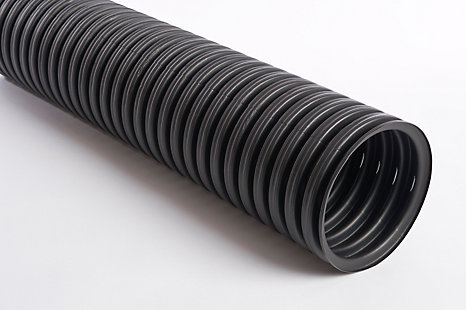I have been researching for a bit and have found a few points of confusion I need help with if someone would be so kind.
I recently took possession of a cottage in Northern Ontario, it seems to have the remnants of numerous water systems. At one point I believe it had a submersible (which is probably still in there somewhere as I see the big-o coming out of the water cut off..) In addition it seems to have had a heated line for the last 18 feet or so and a buried line in big-0 from the cottage to the lake with wiring that has been abandoned. It is currently setup with a simple land based jet pump and over land line.
So not sure if the old underground line is still usable or even if it is all that deep I thought I would utilize a drain back system so worse case the old line is useless I can run a surface run down to the water. Again hoping the wiring is still good there is also a backup run on that as well. The pitch down to the water is steep without valleys, about a 125 foot run dropping about 40-50ft to the water.
So for the tank I have an existing bladder tank, I have seen on some websites that a valve placed prior to this can be used to purge the air on pump startup others state you need an air volume controlled bladderless tank for this setup. Obviously having the tank already I would prefer the first option but need help to find the right valve (as I am useless with trade names for plumbing). Is the first option viable and if so what do I need to add to my current system and where? Second doing some reading I was thinking of using an SQE pump. Is this a good idea? Regardless of the pump my next question is do I remove the check valve or defeat it in the pump to allow the water to drain or do I add a "diverter" "bleeder" or other valve just above the pump? I would prefer the later but if possible what is the valve actually called? Being an electrician I can handle the wiring and the heated line from shoreline to pump.
Have I covered all the alterations I would need to make to my current system?
Also is it possible to setup the system so that in summer you leave the system primed like normal? Would it be as simple as plugging the air intake valve thingy at the top of the system
Many thanks to anyone that can pint me in the right direction.
Geoff
I recently took possession of a cottage in Northern Ontario, it seems to have the remnants of numerous water systems. At one point I believe it had a submersible (which is probably still in there somewhere as I see the big-o coming out of the water cut off..) In addition it seems to have had a heated line for the last 18 feet or so and a buried line in big-0 from the cottage to the lake with wiring that has been abandoned. It is currently setup with a simple land based jet pump and over land line.
So not sure if the old underground line is still usable or even if it is all that deep I thought I would utilize a drain back system so worse case the old line is useless I can run a surface run down to the water. Again hoping the wiring is still good there is also a backup run on that as well. The pitch down to the water is steep without valleys, about a 125 foot run dropping about 40-50ft to the water.
So for the tank I have an existing bladder tank, I have seen on some websites that a valve placed prior to this can be used to purge the air on pump startup others state you need an air volume controlled bladderless tank for this setup. Obviously having the tank already I would prefer the first option but need help to find the right valve (as I am useless with trade names for plumbing). Is the first option viable and if so what do I need to add to my current system and where? Second doing some reading I was thinking of using an SQE pump. Is this a good idea? Regardless of the pump my next question is do I remove the check valve or defeat it in the pump to allow the water to drain or do I add a "diverter" "bleeder" or other valve just above the pump? I would prefer the later but if possible what is the valve actually called? Being an electrician I can handle the wiring and the heated line from shoreline to pump.
Have I covered all the alterations I would need to make to my current system?
Also is it possible to setup the system so that in summer you leave the system primed like normal? Would it be as simple as plugging the air intake valve thingy at the top of the system
Many thanks to anyone that can pint me in the right direction.
Geoff

